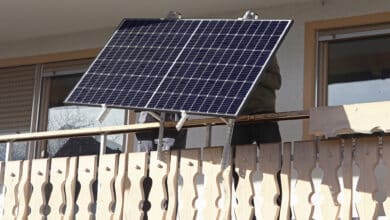
A small Italian company has developed solar panels that look like terracotta tiles. They should make it possible to install panels to generate electricity even on listed buildings – without detracting from their appearance. They are already being used at the Pompeii excavation site.
Solar panels for historic buildings?
As part of the turn to renewable energy, which is being pushed as much because of the negative consequences of climate change as because of the shortage of fossil fuel sources, solar panels are increasingly being installed on the roofs of houses. Historic old towns, however, have so far been exempt from this, as have other historic buildings. The reason is obvious: installing a conspicuous panel would destroy the visual appearance that has been preserved over centuries – and thus a piece of living history.
A small Italian company has now developed panels to solve this problem. They look like terracotta tiles and therefore exert no disruptive effect. The photovoltaic cells are worked into the bricks by hand and covered with polymer compound. Thus, they are not visible from the outside. The fact that the bricks can actually be used without any problems is proven by the Pompeii Archaeological Park. They are already being tested there. Gabriel Zuchtriegel, the director of the archaeological park, expressed his enthusiasm: “They look exactly like the terracotta bricks used by the Romans, but they produce the electricity we need to illuminate the frescoes.” In Pompeii, the great advantage is that there is no need for poles or cables to carry electricity. The bricks do not attract attention because they are visually indistinguishable from the Roman ones. Thus, they contribute to environmental protection as well as to cost savings and to the preservation of the historical site in its previous form.
Other forms are also possible
Dyaqua, a company based in the Venetian town of Camisano Vicentino, says it can also incorporate the solar panels into numerous other brick shapes. Elisabetta Quagliato states, for example, that the appearance of wood, concrete, stone and other than terracotta bricks can also be created. Thus, she says, it is possible to use the panels not only on different roofs, but also in floors or walls.
This wide range of applications could lead to the novel solar tiles becoming established throughout Europe. If the test phase in Pompeii is successful, they will also be used in Greece, Spain, Hungary, Slovenia and Denmark as part of the Pocityf project. The EU-funded project brings together different organizations working on sustainable developments of cities in the EU.



